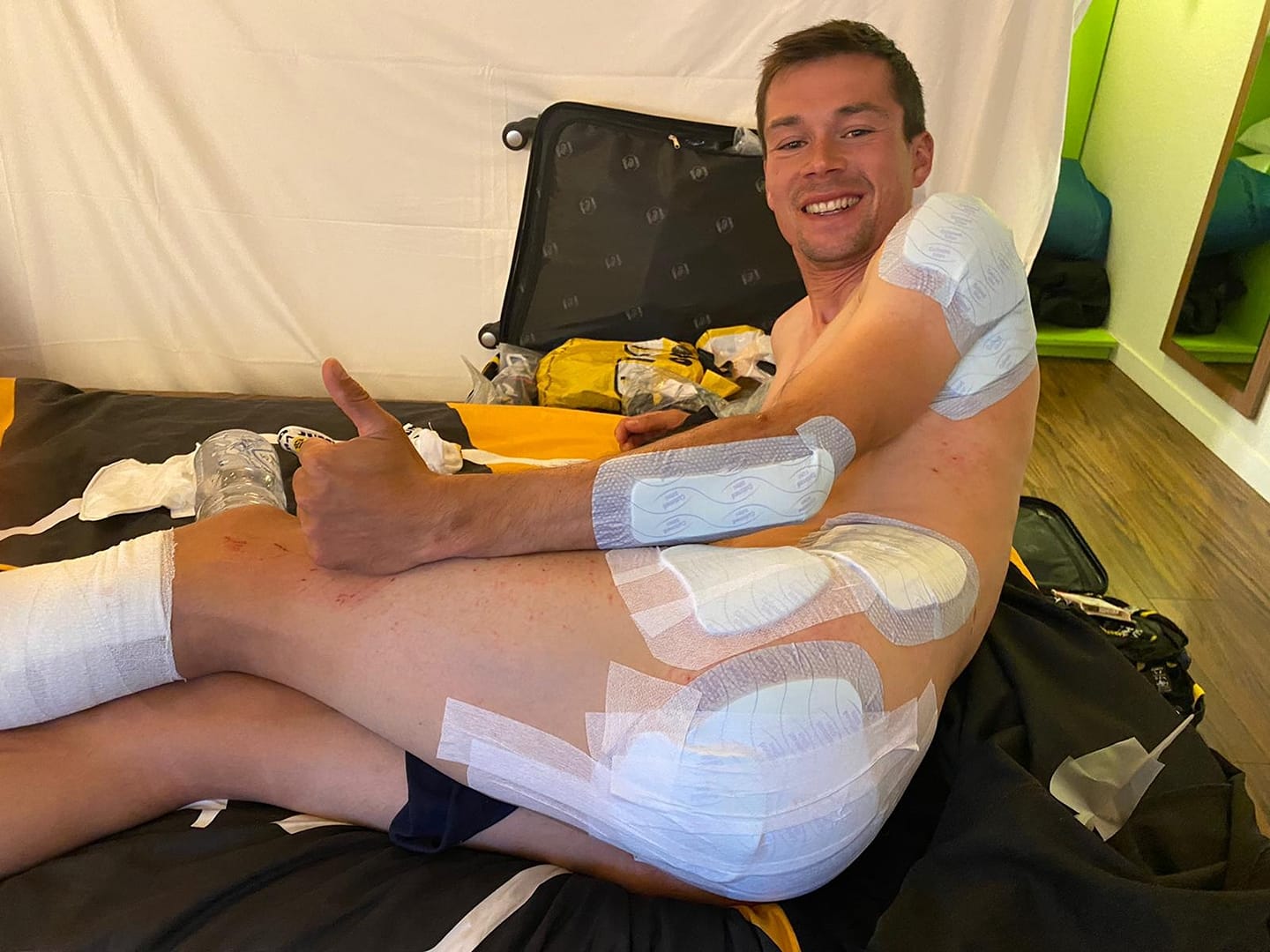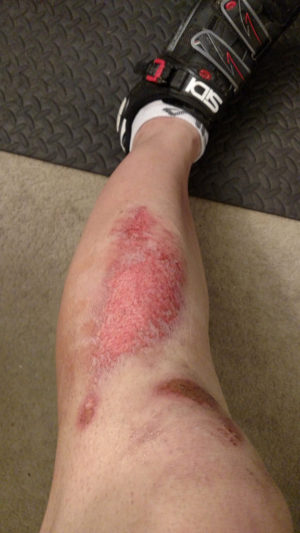
As you take on the task of inspecting and maintaining your wound, it is important to know the difference between natural inflammation and infection. Inflammation is our bodies natural alarm it calls in the clean up and repair crew. Despite previous misconceptions, normal inflammation is not our enemy when it occurs as it should. Basically the periphery (outside) of the wound starts to close in, while cells/enzymes clean up and rebuild within the wound. This happens because healing occurs in 2 ways, contraction and re-epithelization. Your new wound will start to feel tight, extremely sore to touch and will limit your range of motion. There may be intrinsic and extrinsic involved in your healing. Yes, I am a qualified health care professional, writing this blog for people like you. As you know it is always best to consult a qualified health care professional. Follow these steps to get back in the saddle without infection, loss of flexibility of the affected joints, and in time for your next event. If you are reading this in time, great! If not don't worry. Areas such as hands, feet and face are a little more difficult. Your body has a job to do in the wound, allowing it to dry out blocks transport of all that is good about wound healing. There are many myths when it comes to wound care but the worst is to “air it out” and “dry out the wound”. And most importantly, allows for ongoing monitoring. Allows for bathing without stripping the wound of it’s integrity. It keeps bacteria from entering the wound. This keeps the wound environment moist with it’s natural fluid. The best part about the bandages/dressings I recommend is that they can be left on for several days and are transparent. Let It Beįrom this point on, let your wound heal itself. If used, the ointment should be removed after a few hours with saline. Ointments also may cause discoloration of the wound which makes it hard to discriminate healthy and infected tissue. If these key players are unable to move freely they will not be able to fight off bacteria and rebuild skin. Your wound requires healthy natural cell and enzyme migration (movement). The effects only last a few hours or so and after that they arrest the good and attract the bad. Ointments are essentially grease traps for your otherwise happy and healing wound. STOP! Ointments, such as Neosporin and Polysporin, are not always the answer you think they are. Stop with all the Ointmentsīefore you follow your gut and coat the wound with ointment. Cover the wound with a clear bandage such as 3m Nexcare Tegaderm (transparent film), OpSite flex grid (you may have to order online), or Duoderm (unfortunately not transparent).

#Tegaderm road rash free#
Feel free to post it on Instagram for street cred, but make sure to #pedalfitpt. Take a photo to help with daily tracking of the healing. If you just absolutely have to clean it with something use a gentle soap, only once. A few examples of cytotoxic chemicals include: alcohol, Betadine, anti-bacterial soap. FALSE! Hydrogen peroxide is cytotoxic (harmful) and barely bacteriostatic, meaning bacteria is not afraid of those little bubbles. The long standing myth is that the bubbles of hydrogen peroxide have magical powers. Almost all man made agents kill white blood cells, aka cause big problems from the get go. Ensure the wound is clean of bacteria and debris to start with but be gentle.


Nothing else unless you crash into a pile of roadkill, which likely did not happen. First, clean with saline or water, only if possible. Less is more when it comes to road rash and cycling battle-wounds. There is a right way and a disastrous way to start the care for your gnarly abrasion.


 0 kommentar(er)
0 kommentar(er)
